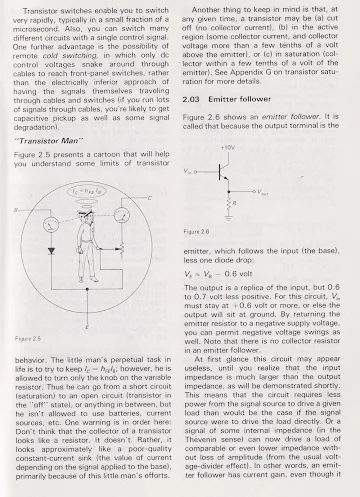Back when Dean KK4DAS and I were trying to find a suitable AF amplifier circuit for our High School Direct Conversion receiver project, we were debating what to use as the final. One option was the standard NPN-PNP push-push amplifier (like in Figure 2.53 above) -- an advantage with this one was that it would not require an AF transformer. But we decided that this circuit would add complexity to a project that we were hoping to keep very simple.
Another option was a simple common emitter amplifier with a transformer in the collector circuit. This worked, and was simpler. We ordered the transformers.
In the midst of all this, at the local radio club hams asked us why we just didn't put a single emitter follower at the output to handle the impedance transformation to an 8 ohm speaker (sort of as in Figure 2.52 above). They were convinced this would work. I was not so convinced and pointed out that we had never seen such a circuit in any of the ham radio literature. If this could be done, why hadn't the likes of Doug DeMaw and others used this circuit in their many, many rigs?
This discussion kind of ended there (we opted for the common emitter transformer circuit), but I have thought about it from time to time. A couple of weeks ago, when I got the second edition of The Art of Electronics, I found the above discussion of the use of this kind of emitter follower circuit. You can see why this circuit has not been used. Just to be sure, I built one in LTSpice. Sure enough, it takes way too much current.
Thank you, Horowitz and Hill!






